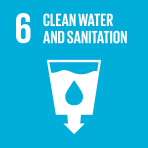- Home
- Sustainable Development Goals
- Clean Water and Sanitation
 Clean Water and Sanitation
Clean Water and Sanitation
Embalses
En el presente capítulo se indican las anomalías en la afluencia de agua a los diversos embalses seleccionados en todo el mundo en 2022. Los datos sobre la afluencia procedían de tres fuentes que comprendían productos satelitales y de SMMH en concreto los modelos Wflow_sbm CaMa-Flood con Dam y WWH.
Síntesis
La edición de 2022 del informe sobre el estado de los recursos hídricos mundiales trae consigo varios avances importantes. En primer lugar se mejoró la representación del estado de los recursos hídricos mundiales mediante la incorporación de nuevos capítulos para describir componentes adicionales del ciclo hidrológico a saber: las aguas subterráneas la humedad del suelo la ET la afluencia a los embalses y la nieve y el hielo.
Anexo técnico
El presente anexo facilita información de máximo nivel sobre los principales pasos metodológicos aplicados para describir el estado de los recursos hídricos mundiales en 2022.
Foreword
As the world prepares to mark the halfway point in implementing the Sustainable Development Goals the dramatic and unacceptable figures on sanitation and wastewater are a stark reminder of the enormous challenges still lying ahead. 3.6 billion people accounting for nearly half of the global population still lack safely managed sanitation services and up to 494 million people practise open defecation. In addition over 80% of the world’s sewage is discharged untreated into the environment.
The way forward — bringing sanitation and wastewater management to the heart of urban development
Drawing on existing literature and primary data collection across 18 cities this study has underlined the scale of the challenge in strengthening sanitation and wastewater management at the global level while also demonstrating that many inspiring examples exist for cities and countries to follow. In this chapter we synthesize key conclusions and recommendations.
إتفاقية المياه تهتم بحماية بيئتنا ونُظُمنا الإيكولوجية
تركز الاتفاقية تركيزاً شديداً على حماية بيئتنا وعلى استدامة إدارتناللمياه. وتشمل أهدافها الأساسية الحد من التلوث، وحفظ النُّظُمالإيكولوجية واستعادتها، وحماية التنوّع البيولوجي في الأحواض العابرةللحدود. وتساعد الاتفاقية على ضمان بيئة صحية لأجيال المستقبل.
Acknowledgements
This publication would not have been possible without the generous contributions of many governments international organizations and individuals
Reporting and use of data
Reporting should be based on interpretation of the available data and plays a key role in decisionmaking for water management and the further development of monitoring and assessment programmes. It is therefore important that the reporting and use of data and information is integrated into the development of the overall monitoring network.
Acknowledgements
This report was produced as part of the UN-Water Integrated Monitoring Initiative for Sustainable Development Goal 6 (IMI-SDG6) by the United Nations Economic Commission for Europe (UNECE) and the United Nations Educational Scientific and Cultural Organization (UNESCO) in their capacity as co-custodian agencies of SDG indicator 6.5.2.
Explanatory note on use of data in the report
Data used throughout the report is primarily based on the national reports submitted by countries during the 2023 monitoringt exercise.
Joint Foreword by UNECE and UNESCO
Water is one of the most important challenges of our time. Two statistics are particularly revealing. First 60% of the world’s freshwater flows across international borders. Second water-related extreme events account for 70% of all deaths related to natural disasters. As these figures show water is truly a global issue and one that calls for global solutions.
Foreword
Despite progress in the provision of basic services billions of people worldwide still lack access to safe water sanitation and hygiene. In the pan-European region alone over 16 million people still lack access to basic drinking water services and 29 million people lack access to basic sanitation. Closing the equity gap is critical for realizing the human rights to water and sanitation which are cornerstones of public health well-being and human dignity.
